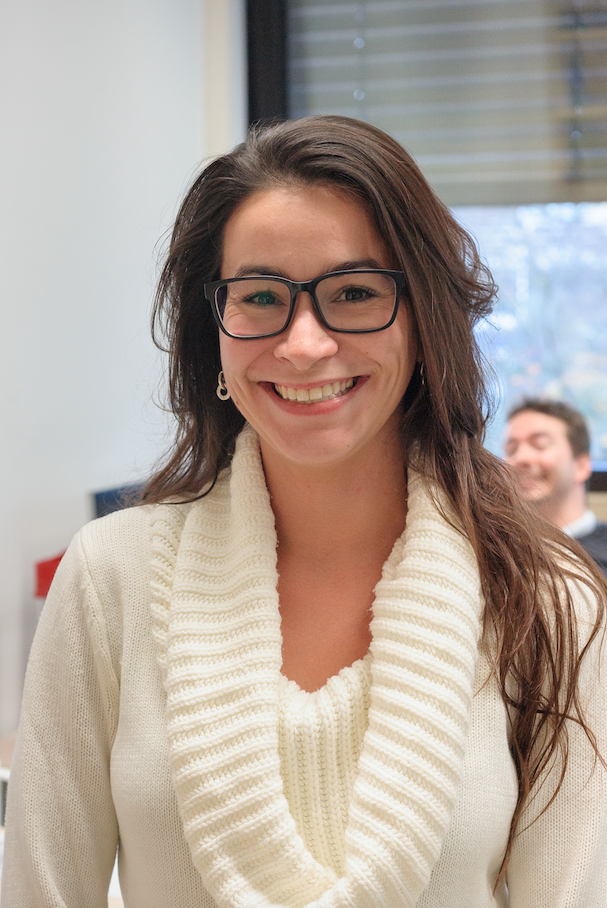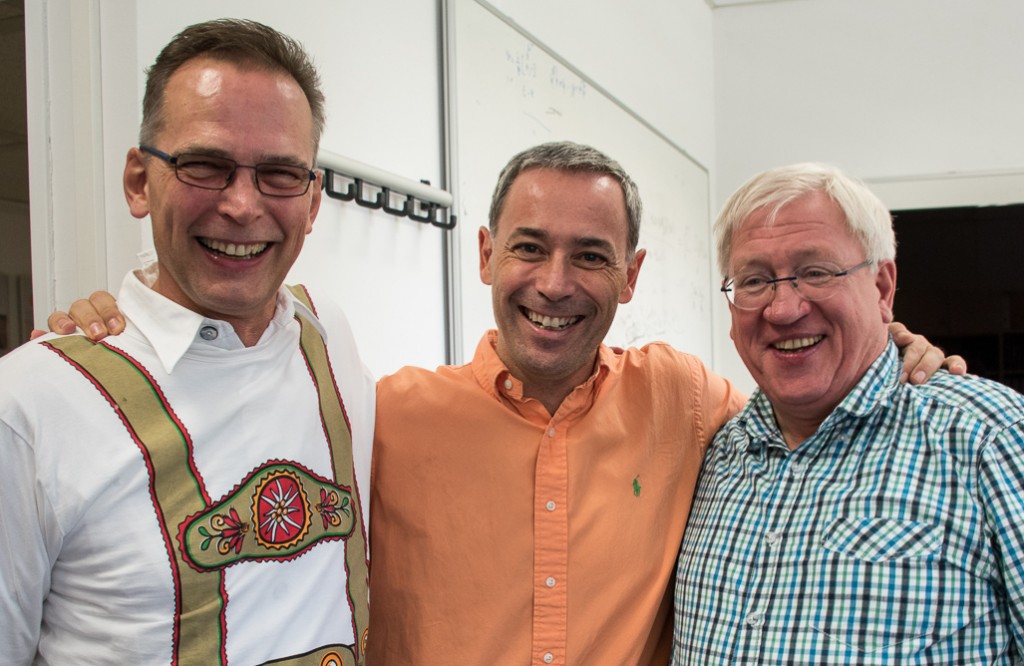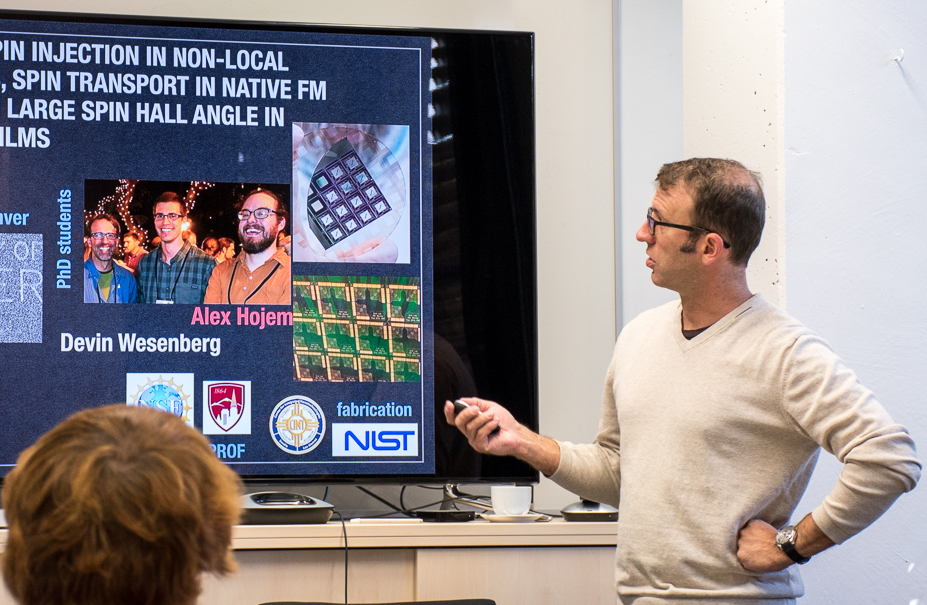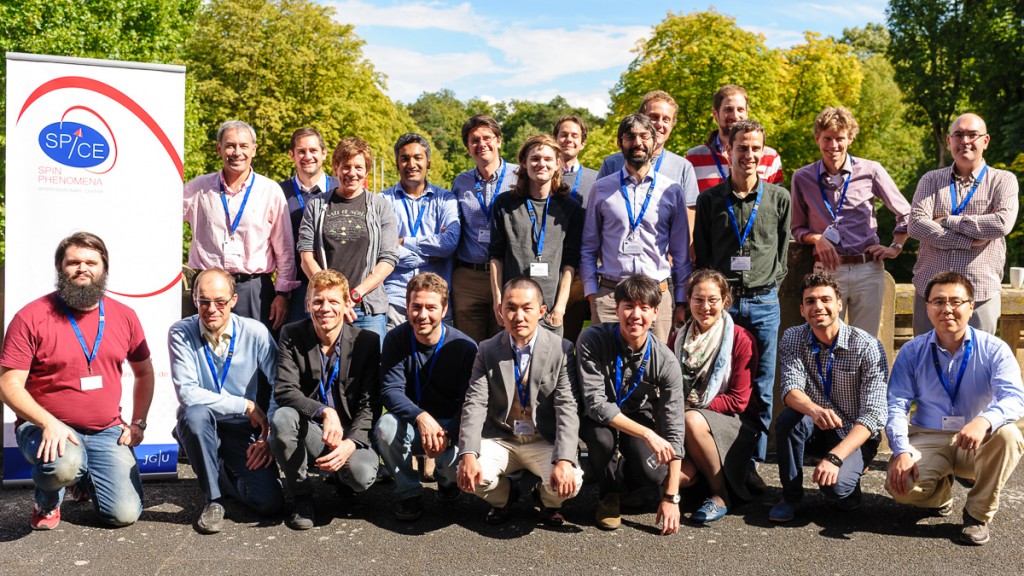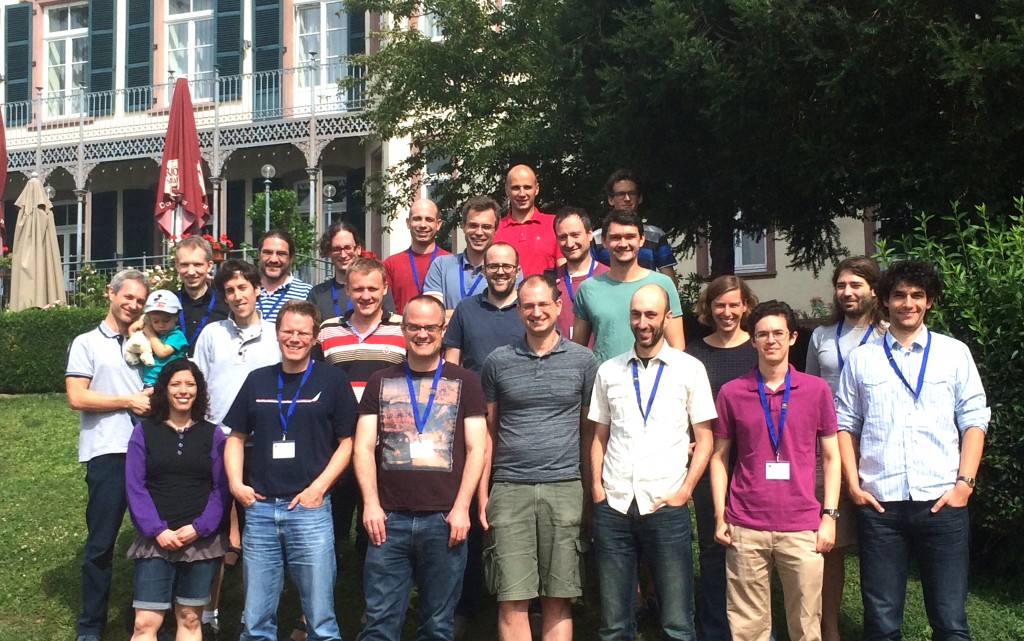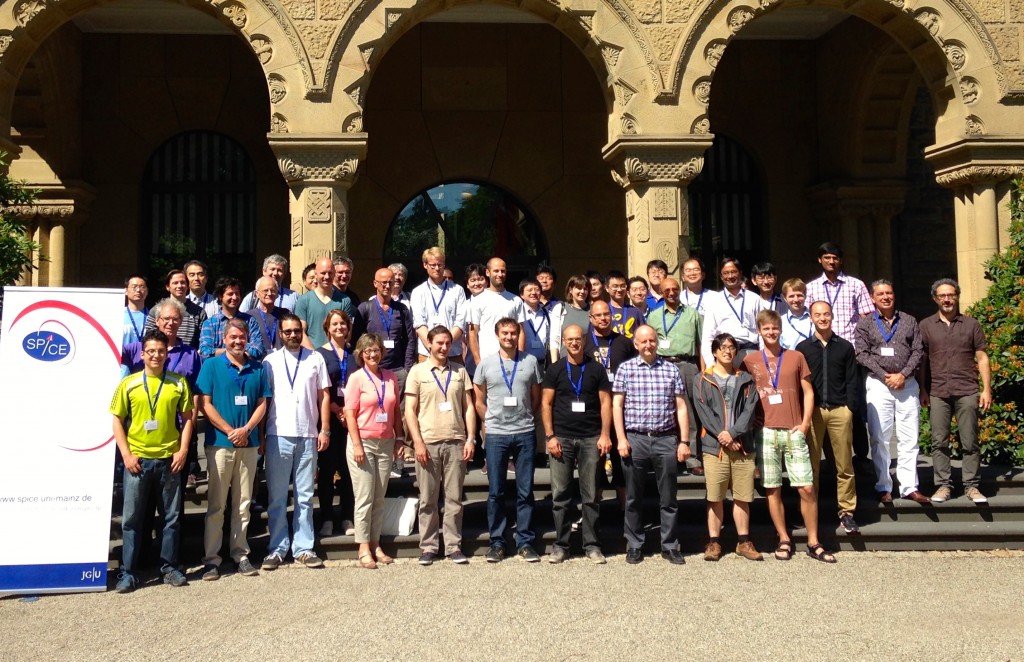
This week the SPICE Workshop on Magnetic Adatoms as Building Blocks for Quantum Magnetism took place. Scientific Organizers Cristian Batista, Joaquín Fernández-Rossier and Sander Otte and SPICE co-organizer Jairo Sinova brought together the communities of quantum magnetism and surface nanomagnetism, two areas that have shared little common activity so far. However, recent developments promise new potential synergies. Innovations in scanning tunneling microscopy (STM) now permit probing and fabricating spin chains and many other artificial spin systems, providing a new ground to explore quantum magnetism phenomena. This week, at Schloß Waldthausen, the participants from the quantum magnetism community learned about the exciting new possibilities to explore quantum magnetism in nano engineered spin chains. The surface magnetism community got insight into the fascinating physical concepts that are being explored in quantum magnetism. Together they exchanged ideas and shared their scientific perspectives to advance this research front. The program lasted 4 days and included three types of talks:
1. School-like invited lectures, 50+10 minute discussion, tutorial style covering well established results, trying to reach the non-experts.
2. Workshop-like 25+5m invited talks, presenting results that are potentially appealing for the two communities.
3. Contributed talks (15+5m) with recent developments in these rapidly evolving fields.
There was a total of 7 tutorials, distributed over the program and followed by focused shorter talks. In addition, poster sessions were an important part of the program.
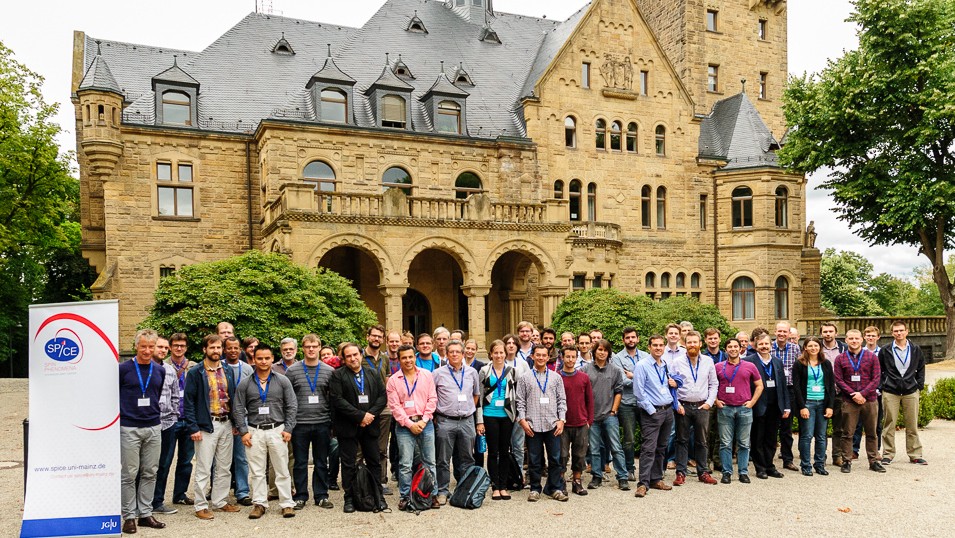
Photos: Sabrina Hopp

